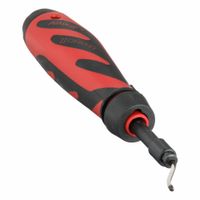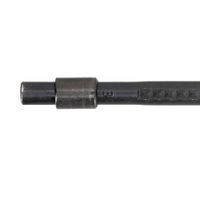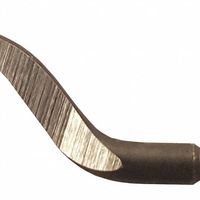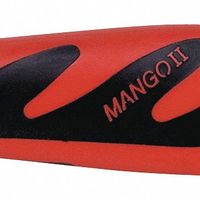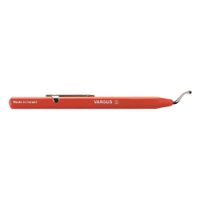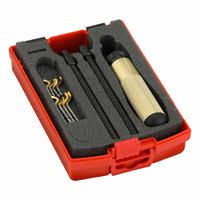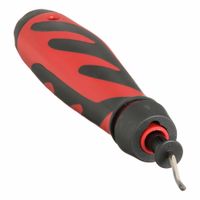Call +(254) 703 030 000 / 751 483 999 / 721 704 777
.....Read More
Frequently Asked Questions
What are the best hand deburring tools for metal workpieces?
The best hand deburring tools for metal workpieces include:
1. **Deburring Blades and Holders**: These are versatile tools with replaceable blades designed for various materials and edge types. Popular models include the Noga deburring system, which offers a range of blades for different applications.
2. **Rotary Deburring Tools**: These tools, often powered by a hand drill, use abrasive or cutting heads to remove burrs. They are effective for larger areas and more aggressive deburring needs.
3. **Hand Files**: Available in various shapes and sizes, hand files are traditional tools for deburring. Flat, half-round, and round files can be used depending on the contour of the workpiece.
4. **Deburring Brushes**: Wire or abrasive brushes can be used for light deburring and finishing. They are ideal for removing fine burrs and providing a smooth finish.
5. **Countersink Tools**: These are used to deburr holes and edges. They come in various angles and sizes to match the specific requirements of the workpiece.
6. **Scrapers**: These tools are used for precision deburring and can be particularly useful for removing burrs from flat surfaces or edges.
7. **Abrasive Pads and Sanding Blocks**: These are used for light deburring and finishing, providing a smooth surface on metal workpieces.
8. **Chamfering Tools**: These tools are designed to create a beveled edge, effectively removing burrs while also preparing the edge for further processing.
9. **Burr Removal Knives**: These are specialized knives designed for deburring, offering precision and control for intricate work.
Selecting the right tool depends on the material, the size and shape of the burr, and the desired finish.
How do I choose the right deburring blade for my project?
To choose the right deburring blade for your project, consider the following factors:
1. **Material Type**: Identify the material you are working with, such as metal, plastic, or wood. Different materials require specific blade types to ensure effective deburring without damaging the workpiece.
2. **Edge Geometry**: Assess the edge geometry of the workpiece. For straight edges, a standard deburring blade may suffice, while complex shapes or contours might require a more flexible or specialized blade.
3. **Blade Material**: Choose a blade made from a material that complements the workpiece. High-speed steel (HSS) blades are versatile and durable, while carbide blades are suitable for harder materials.
4. **Deburring Method**: Decide between manual or machine deburring. Manual deburring offers more control and is suitable for small-scale projects, while machine deburring is efficient for larger volumes.
5. **Blade Size and Shape**: Select the appropriate blade size and shape based on the workpiece dimensions and the specific areas that need deburring. Smaller blades are ideal for intricate areas, while larger blades cover more surface area quickly.
6. **Finish Requirements**: Determine the desired finish quality. Some blades provide a smoother finish, while others are designed for rapid material removal.
7. **Cost and Availability**: Consider your budget and the availability of blades. While high-quality blades may have a higher upfront cost, they often offer better performance and longevity.
8. **Safety and Ergonomics**: Ensure the blade is safe to use and ergonomically designed to reduce operator fatigue, especially for manual deburring.
9. **Manufacturer Recommendations**: Consult the manufacturer's guidelines or seek expert advice to ensure compatibility with your specific application.
By evaluating these factors, you can select a deburring blade that meets the specific needs of your project, ensuring efficiency and quality in the deburring process.
What is the difference between replaceable-blade and fixed-blade deburring tools?
Replaceable-blade and fixed-blade deburring tools are both used to remove burrs and sharp edges from materials, but they differ in design and functionality.
Replaceable-blade deburring tools feature a handle with interchangeable blades. These blades can be easily swapped out when they become dull or when a different blade type is needed for a specific material or application. This design offers versatility and cost-effectiveness, as users can replace only the blade rather than the entire tool. Replaceable-blade tools are ideal for environments where different materials are processed frequently, requiring various blade types and sizes.
Fixed-blade deburring tools, on the other hand, have a blade that is permanently attached to the handle. These tools are typically more robust and durable, as the fixed blade provides a stable and secure cutting edge. They are often preferred for heavy-duty applications where consistent performance is required over time. Fixed-blade tools may offer better control and precision, as there is no movement between the blade and handle.
In summary, the main differences lie in the blade attachment and versatility. Replaceable-blade tools offer flexibility and cost savings with interchangeable blades, while fixed-blade tools provide durability and stability for consistent use. The choice between the two depends on the specific needs of the task, such as the frequency of use, material types, and the importance of precision versus versatility.
How do I maintain and sharpen deburring blades?
To maintain and sharpen deburring blades, follow these steps:
1. **Regular Cleaning**: After each use, clean the blades with a soft cloth to remove debris and metal shavings. Use a mild solvent if necessary to remove stubborn residues.
2. **Inspection**: Regularly inspect the blades for signs of wear or damage. Look for nicks, dull edges, or any deformation that might affect performance.
3. **Sharpening**: Use a fine-grit sharpening stone or a diamond file to sharpen the blades. Hold the blade at the original bevel angle, usually around 20-30 degrees, and gently stroke the blade along the stone or file. Maintain consistent pressure and angle to ensure an even edge.
4. **Honing**: After sharpening, hone the blade using a honing rod or a leather strop to refine the edge and remove any burrs. This step enhances sharpness and prolongs the blade's life.
5. **Lubrication**: Apply a light coat of oil to the blade to prevent rust and corrosion. Use a high-quality machine oil or a specialized blade oil for best results.
6. **Storage**: Store the blades in a dry, safe place, preferably in a protective case or sheath to prevent accidental damage and maintain sharpness.
7. **Replacement**: If a blade is excessively worn or damaged beyond repair, replace it with a new one to ensure optimal performance and safety.
By following these steps, you can maintain the efficiency and longevity of your deburring blades, ensuring they remain sharp and effective for precise deburring tasks.
What are the benefits of using adjustable-length deburring tools?
Adjustable-length deburring tools offer several benefits:
1. **Versatility**: They can handle a wide range of materials and sizes, making them suitable for various applications without needing multiple tools.
2. **Cost-Effectiveness**: By reducing the need for multiple tools, they lower inventory costs and minimize the need for frequent tool changes.
3. **Efficiency**: Adjustable tools streamline the deburring process, allowing for quick adjustments to accommodate different workpieces, which enhances productivity.
4. **Precision**: They provide consistent and precise deburring, improving the quality of the finished product and reducing the likelihood of errors.
5. **Ease of Use**: These tools are user-friendly, often featuring simple mechanisms to adjust the length, which reduces setup time and training requirements.
6. **Space-Saving**: Fewer tools are needed, which saves storage space in workshops and manufacturing facilities.
7. **Durability**: High-quality adjustable tools are built to withstand repeated use, offering long-term reliability and performance.
8. **Safety**: They reduce the risk of injury by minimizing the need for manual adjustments and handling of multiple sharp tools.
9. **Flexibility**: Ideal for both manual and automated processes, they can be integrated into various manufacturing systems.
10. **Customization**: Users can tailor the tool to specific project needs, enhancing adaptability to different deburring challenges.
Overall, adjustable-length deburring tools enhance operational efficiency, reduce costs, and improve the quality and safety of manufacturing processes.
How do I safely use hand deburring tools to avoid injury?
To safely use hand deburring tools and avoid injury, follow these guidelines:
1. **Select the Right Tool**: Choose a deburring tool appropriate for the material and type of burr. Ensure the tool is in good condition, with no visible damage.
2. **Wear Protective Gear**: Always wear safety goggles to protect your eyes from metal shavings. Use gloves to protect your hands from sharp edges and burrs.
3. **Secure the Workpiece**: Firmly clamp or secure the workpiece to prevent movement during deburring. This reduces the risk of slipping and accidental cuts.
4. **Maintain a Stable Stance**: Stand with feet shoulder-width apart for balance. Keep your body stable to maintain control over the tool.
5. **Use Proper Technique**: Hold the tool firmly but not too tightly. Use smooth, controlled strokes, applying consistent pressure. Avoid excessive force, which can cause the tool to slip.
6. **Work Away from Your Body**: Always deburr in a direction away from your body to minimize the risk of injury if the tool slips.
7. **Keep the Work Area Clean**: Regularly clear away metal shavings and debris to prevent slipping and ensure a clear view of your work.
8. **Inspect the Tool Regularly**: Check for wear and tear. Replace blades or tools that are dull or damaged to maintain efficiency and safety.
9. **Take Breaks**: Avoid fatigue by taking regular breaks. Tiredness can lead to loss of concentration and increased risk of accidents.
10. **Stay Focused**: Pay full attention to the task. Avoid distractions and never use the tool when impaired by fatigue, alcohol, or medication.
By following these safety measures, you can effectively minimize the risk of injury while using hand deburring tools.
What are the most common materials used for deburring blades?
The most common materials used for deburring blades include:
1. **High-Speed Steel (HSS):** Known for its durability and ability to withstand high temperatures, HSS is a popular choice for deburring blades. It maintains sharpness over extended use and is suitable for a variety of materials, including metals and plastics.
2. **Carbide:** Tungsten carbide is extremely hard and wear-resistant, making it ideal for deburring tough materials like stainless steel and other hard metals. Carbide blades offer a longer lifespan compared to HSS but are more brittle.
3. **Ceramic:** Ceramic blades are used for their hardness and ability to maintain a sharp edge. They are particularly effective for deburring softer materials like plastics and aluminum. However, they can be more fragile than metal blades.
4. **Cobalt Steel:** An alloy of steel with cobalt, this material offers enhanced heat resistance and durability. Cobalt steel blades are suitable for high-speed applications and can handle tougher materials.
5. **Diamond-Coated Blades:** These blades have a coating of diamond particles, providing exceptional hardness and cutting ability. They are used for precision deburring of very hard materials, including composites and ceramics.
6. **Stainless Steel:** While not as hard as carbide or HSS, stainless steel blades are corrosion-resistant and suitable for applications where moisture or chemicals are present.
7. **Polycrystalline Diamond (PCD):** PCD blades are extremely hard and wear-resistant, used for deburring abrasive materials. They offer a long service life but are more expensive.
These materials are chosen based on the specific requirements of the deburring task, including the type of material being deburred, the desired finish, and the operational conditions.
